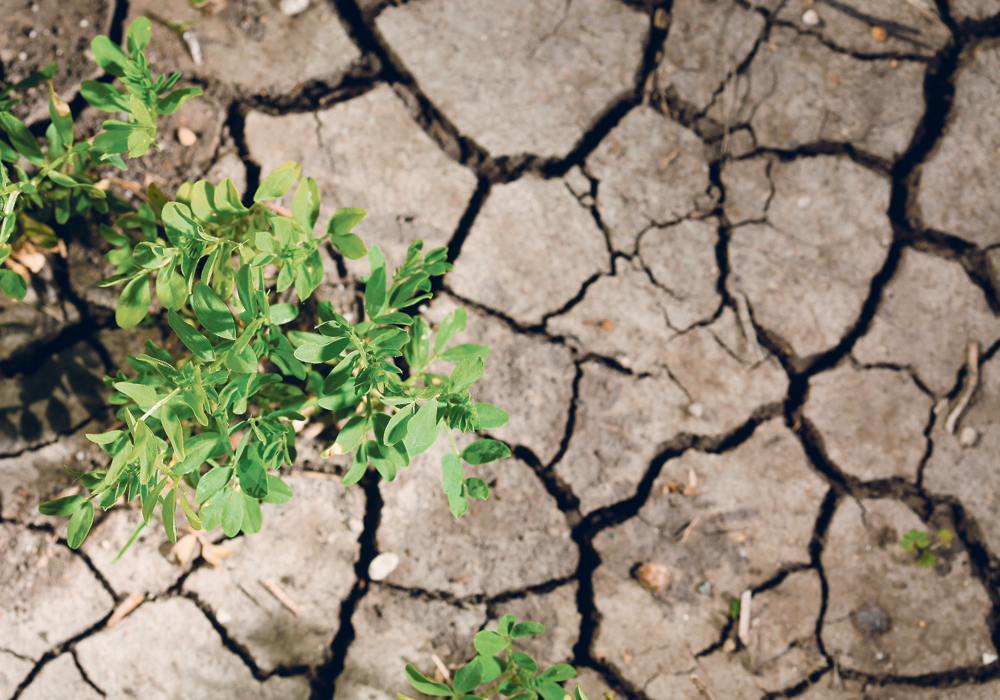These mobile snippets of the DNA code can disrupt or amplify genes and may rapidly trigger improved crop production traits
Drought is a major threat to all crops and new research is hoping to find new trait variations in plants to help them cope with more extreme conditions.
Researchers at the University of Cambridge’s Sainsbury Laboratory and plant sciences department in the United Kingdom have found that drought stress actually triggers the activities of a family of jumping genes called Rider retrotransposons.
Jumping genes contribute to the shape and colour in tomatoes but scientists now know that they carry a huge potential for crop improvement through speed-breeding.
Read Also

Farming Smarter receives financial boost from Alberta government for potato research
Farming Smarter near Lethbridge got a boost to its research equipment, thanks to the Alberta government’s increase in funding for research associations.
The jumping genes basically jump into new positions in the genome. They are mobile snippets of the DNA code and they can change, disrupt, or amplify genes, or have no effect at all.
“Jumping genes are called as such because they are able to be mobilized (the technical term is ‘to transpose’), moving their DNA across the genome using either cut and paste or copy and paste mechanisms,” said Hajk-Georg Drost, research associate.
“As a consequence of their jumping activity, this class of genes may produce different effects. They can interfere with other genes in the vicinity of the new genome location where they land. They can disrupt a gene if they jump inside it. They can provide new function by changing expression of neighbouring genes, or they can even generate novel function by merging their DNA sequences with the DNA sequences of genes at the new location.”
Taking the natural ability of jumping genes, plant breeders would be able to generate new characteristics and rapidly trigger improved traits in crops that could lead to a more efficient harvest and improved yield. The speed-breeding approach would be able to control the random mutation and accelerate the process of generating new, improved phenotypes of tomatoes.
Since the research has also shown that this class of genes is present in a number of economically important crops such as rapeseed, beetroot and quinoa, there is enormous scope for breeders to make many improvements while at the same time reducing breeding time compared to traditional methods.
Manipulating mobile genes, called transposons, is not the same as genetic modification. In GM crops, the DNA change is generated artificially by insertion of alien DNA from another plant. Transposons are naturally present within the plant. The plant does not rely on imported DNA but modifies the DNA in a natural process. Thus, the new plant is an improved version of itself rather than a genetically modified organism.
While Drost and his colleagues Matthias Benoit and Marco Catoni have found that drought stress triggers jumping gene activity, they do not yet have evidence of triggers driven by other stresses.
“Nevertheless, as a survival strategy for jumping genes, multiple triggers can exist,” said Drost. “In the evolutionary community, it is still debated whether this stress response specialization is an evolved feature of jumping gene families to adapt to certain host conditions or whether some families of genes evolved multiple activation triggers to increase their fitness.”
Research continues to explore when and how jumping genes emerged in the first place. Drost said that one hypothesis suggests they emerged during early evolution. Transposable elements can be found in bacteria and single-celled organisms.
“If this is true, then jumping genes may have contributed to the dynamic change of genomes since the onset of complex life,” he said. “In this scenario, jumping genes could be one of the drivers of genome diversification on top of sexual recombination which influenced gene evolution not only in all plants, but also in all animals and fungi, which shows the power of harnessing this ancient evolutionary potential for crop speed-breeding.”
Most jumping genes do not mobilize, or they jump very rarely, in virtually all plant species. But, said Drost, they can be awakened in precise environmental or stress conditions.
“Based on this initial research, we can speculate that, upon mobilization, the drought-response elements of Rider can randomly create new gene regulatory networks responsive to drought stress and thus help to breed crops that are more resistant to drought,” he said.
Drost said that climate change is probably the biggest unsolved challenge humanity must overcome within the next 50 years.
“Our strategy to mobilize native jumping genes in plants to speed-breed crops may be one of the solutions to tackle this imminent climate threat. Our ancestors bred crops for thousands of years to achieve the state (of crop production) in use today.”
The researchers recognize that they are at the beginning of this specific field of research and much more molecular research is needed before harnessing this system of crop improvement.
The study was published in PLOS Genetics.

















